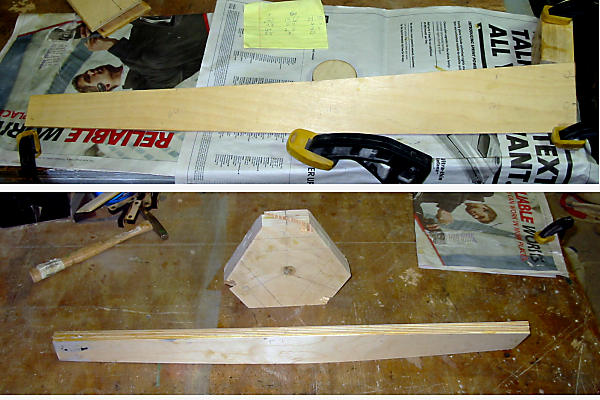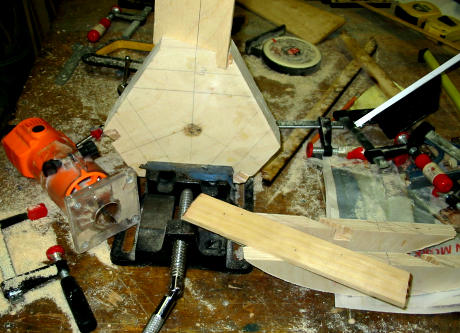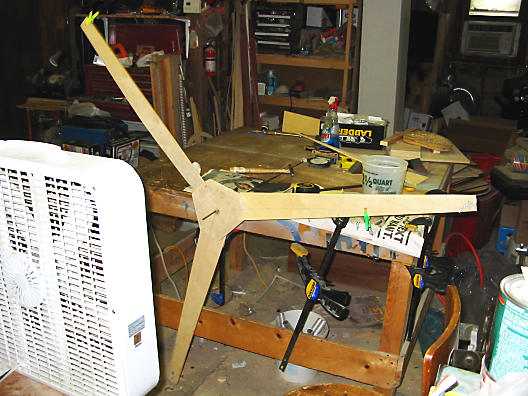I need a set of fast five or six foot blades... I've already carved a set of seven foot and then ten foot blades from lumber and I just wanted to try something different.
I got some basic dimensions for 1.7 meter @ TSR 8 blades from Alton's propeller carving page and cut six pieces of 1/8" plywood to match the chords and radii then I set up the drops at distance on my workbench with some blocks of wood. I spread glue on two pieces of plywood and clamped then down on the bench.

The first test showed about 25% spring back so adjusted the block heights accordingly. The result was fairly repeatable. The bottom part of the picture shows all three blades standing next to each other; it almost looks like a solid block of wood.
I measured the actual angle at the root of the blade and made a jig to guide my router at the angle on the hub. I carved out a 3/4" deep slot in three passes. You can see the router guide in the lower right of this picture. I clamped it to the hub with two clamps then I cut the slot.

I put two brads in each blade to hold them on the hub, balanced them then hung them in front of a box fan.

They are turning about 10 rpm with the fan blowing on the center of the blades. (Can't tell from the pic, the flash not only froze the mill blade but froze the fan blades as well!)
... there's probably less than an hour of shop time in making these so far (though I did let the glue-up's sit overnight.) That's way faster and lot less wood chips than starting with a big chuck of wood.
I haven't sanded in the airfoil yet. There's only enough material for "full thickness" up to the outer 25% of the blade. From what I've read on the board, I suspect that's enough though I figure I could glue on some balsa or try again with three pieces of plywood if needed.
I know that some folks say that plywood isn't strong enough for blades but the twist in these adds a lot to their stiffness. If they still turn out not to be stiff enough, I'll give them a wrap in carbon fiber as I have a bit left over from a previous project.
- Ed.